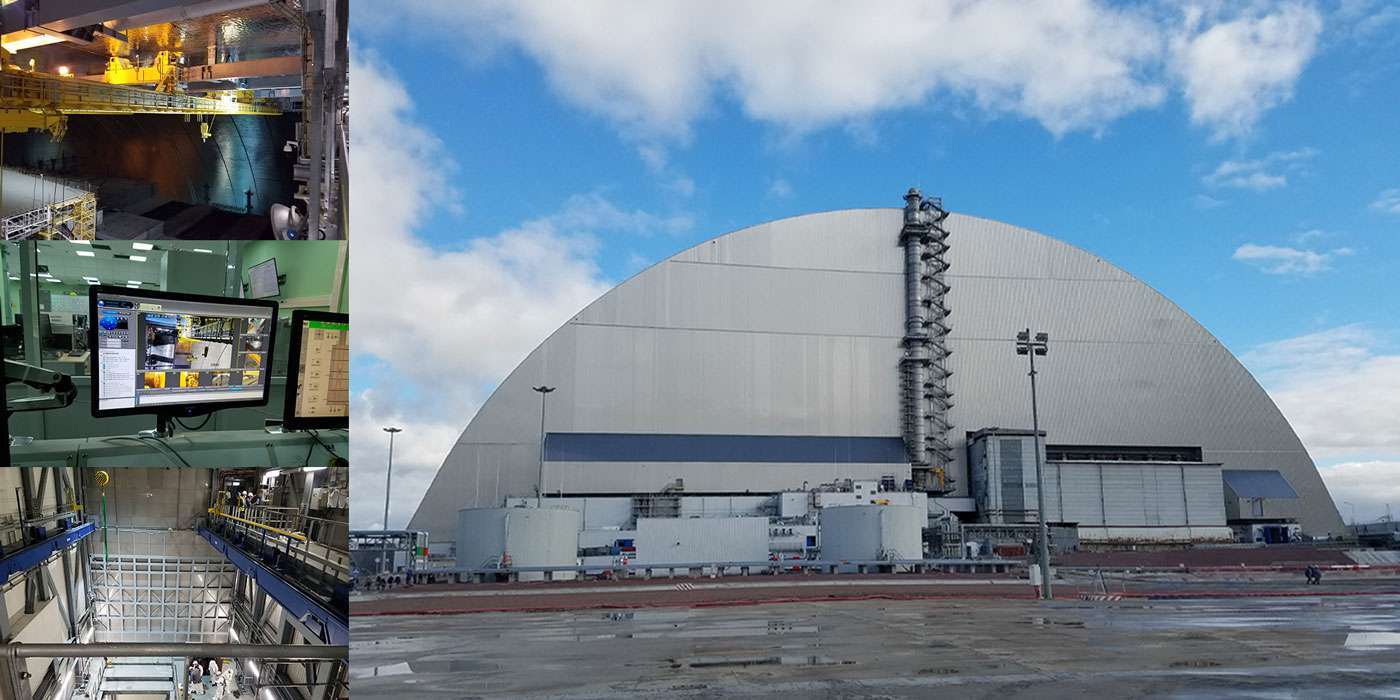Chernobyl New Safe Confinement
Client: Ukraine
General Contractors: Novarka
Project Description: Process Video System
Project Timeline: 2012 – Ongoing
AES Systems is no stranger to engineering solutions for tough environments. After the meltdown of reactor Number 4 at the Chernobyl Nuclear Power Plant near Pripyat, Ukraine in 1986 the world watched and waited for over three decades for a permanent solution to the leaking radiation. A plan was engineered with the support and funding by many nations to build a New Safe Confinement (NSC) over the crumbling concrete from the original confinement, known as the sarcophagus.
The NSC is an arch that was built of steel frame, with stainless steel cladding inside and out. The radiation is contained, but the environment inside is far from safe. As work is performed radiation will always be a concern, and workers inside would be at high risk of hazardous exposure. To safely work on the problem a remote crane system is used, monitored from a control room on site, but shielded from radiation. Two crane bridges travel the over 400-foot length inside the arch.
Three different crane carriages can be used to perform a variety of functions such as lifting and loading debris, cutting concrete and rebar, and most importantly dismantling contaminated structures remotely. The carriages can be located on either bridge or be loaded into a safe garage space for maintenance. This creates a functional toolset for the remote cleanup. It also presents a great challenge in the way cameras can be used to monitor the cranes movement.
As the carriages and bridges move video must be transmitted back to the control room in near real time, without powering down or losing communication. The crane system has no wire bundles connecting the five crane parts, so a creative solution was needed to ensure seamless video transmission. Mobile wireless network nodes were used, however, these are not ordinary Wi-Fi. These are enterprise level mesh nodes, with radiation tolerant cabling and antennas, capable of 500 Mbps throughput per link.
Working with partners in radiation tolerant cameras, and the crane manufacturers, AES Systems was able to test a complete network video system using modern PTZ cameras, self-healing wireless mesh radios, and a fully redundant fiber optic and copper backbone network. The video management system (VMS) chosen was a multi-language video server that supported US development and testing prior to shipment overseas, where Russian language operation was required on site. Total system latency was less than 250ms, less time than it takes to blink.


